1. Yeni-Komshian GH, Benson DA. Anatomical study of cerebral asymmetry in the temporal lobe of humans, chimpanzees, and rhesus monkeys. Science. 1976; 192(4237):387–389.


2. Vincent JL, Patel GH, Fox MD, Snyder AZ, Baker JT, Van Essen DC, et al. Intrinsic functional architecture in the anaesthetized monkey brain. Nature. 2007; 447(7140):83–86.

3. Jing W, Wenchao W, Lin L, Li L, Guimei W, Heng T, et al. A new MRI approach for accurately implanting microelectrodes into deep brain structures of the rhesus monkey (Macaca mulatta). J Neurosci Methods. 2010; 193(2):203–209.


6. Hartman CG, Strauss WL, Bast TH. The Anatomy of the Rhesus Monkey (Macaca mulatta). Baltimore, MD: Williams & Wilkins;1933.
7. Berringer OM, Browning FM, Schroeder CR. An Atlas and Dissection Manual of Rhesus Monkey Anatomy. Tallahassee, Fl: Anatomy Laboratory Aids;1968.
10. Wisco JJ, Killiany RJ, Guttmann CR, Warfield SK, Moss MB, Rosene DL. An MRI study of age-related white and gray matter volume changes in the rhesus monkey. Neurobiol Aging. 2008; 29(10):1563–1575.


11. Mars RB, Jbabdi S, Sallet J, O'Reilly JX, Croxson PL, Olivier E, et al. Diffusion-weighted imaging tractography-based parcellation of the human parietal cortex and comparison with human and macaque resting-state functional connectivity. J Neurosci. 2011; 31(11):4087–4100.

12. Frey S, Pandya DN, Chakravarty MM, Bailey L, Petrides M, Collins DL. An MRI based average macaque monkey stereotaxic atlas and space (MNI monkey space). Neuroimage. 2011; 55(4):1435–1442.


13. Miller RE, Fowler ME. Fowler's Zoo and Wild Animal Medicine, Volume 8. St Louis, MO: Saunders Elsevier;2014.
14. Park JS, Chung MS, Shin DS, Har DH, Cho ZH, Kim YB, et al. Sectioned images of the cadaver head including the brain and correspondences with ultrahigh field 7.0 T MRIs. Proc IEEE. 2009; 97(12):1988–1996.
15. Cho ZH. 7.0 Tesla MRI Brain Atlas: In Vivo Atlas with Cryomacrotome Correlation. 2nd ed. New York, NY: Springer-Verlag New York;2010.
16. Park JS. Cross-Sectional Atlas of the Human Head: with 0.1-mm Pixel Size Color Images. Singapore, Singapore: Springer Singapore;2018.
17. Dauguet J. Three-dimensional histological imaging of primate brain and correlation with in vivo medical device images. Rev Primatol. 2010; 2:e4.
18. Paxinos G, Huang XF, Toga AW. The Rhesus Monkey Brain in Stereotaxic Coordinates. San Diego, CA: Academic Press;2000.
19. McLaren DG, Kosmatka KJ, Oakes TR, Kroenke CD, Kohama SG, Matochik JA, et al. A population-average MRI-based atlas collection of the rhesus macaque. Neuroimage. 2009; 45(1):52–59.


21. Ackerman MJ. The Visible Human Project. Proc IEEE. 1998; 86(3):504–511.

22. Schiemann T, Freudenberg J, Pflesser B, Pommert A, Priesmeyer K, Riemer M, et al. Exploring the Visible Human using the VOXEL-MAN framework. Comput Med Imaging Graph. 2000; 24(3):127–132.


23. Park JS, Chung MS, Hwang SB, Lee YS, Har DH, Park HS. Visible Korean human: improved serially sectioned images of the entire body. IEEE Trans Med Imaging. 2005; 24(3):352–360.

24. Zhang SX, Heng PA, Liu ZJ. Chinese visible human project. Clin Anat. 2006; 19(3):204–215.


25. Dai JX, Chung MS, Qu RM, Yuan L, Liu SW, Shin DS. The Visible Human Projects in Korea and China with improved images and diverse applications. Surg Radiol Anat. 2012; 34(6):527–534.


26. Waldby C. The Visible Human Project: Informatic Bodies and Posthuman Medicine. New York, NY: Routledge;2000.
27. Teran J, Sifakis E, Blemker SS, Ng-Thow-Hing V, Lau C, Fedkiw R. Creating and simulating skeletal muscle from the visible human data set. IEEE Trans Vis Comput Graph. 2005; 11(3):317–328.


28. Zhang G, Luo Q, Zeng S, Liu Q. The development and application of the visible Chinese human model for Monte Carlo dose calculations. Health Phys. 2008; 94(2):118–125.


29. Li T, Gong H, Luo Q. Visualization of light propagation in visible Chinese human head for functional near-infrared spectroscopy. J Biomed Opt. 2011; 16(4):045001.

30. Shin DS, Chung MS, Park HS, Park JS, Hwang SB. Browsing software of the Visible Korean data used for teaching sectional anatomy. Anat Sci Educ. 2011; 4(6):327–332.


32. Chung BS, Shin DS, Brown P, Choi J, Chung MS. Virtual dissection table including the visible Korean images, complemented by free software of the same data. Int J Morphol. 2015; 33(2):440–445.

33. Park HS, Choi DH, Park JS. Improved sectioned images and surface models of the whole female body. Int J Morphol. 2015; 33(4):1323–1332.

34. Kim JY, Chung MS, Park JS, An CS, Har DH, Park HS. Manufacture of the serially sectioned images of the whole body (second report: photographing and processing of the anatomical images). Korean J Anat. 2002; 35(4):305–314.
35. Gonzalez RC, Woods RE, Eddins SL. Digital Image Processing Using MATLAB. Upper Saddle River, NJ: Pearson-Prentice-Hall;2004.
36. Park JS, Chung MS, Park HS, Shin DS, Har DH, Cho ZH, et al. A proposal of new reference system for the standard axial, sagittal, coronal planes of brain based on the serially-sectioned images. J Korean Med Sci. 2010; 25(1):135–141.


37. Shin DS, Jang HG, Hwang SB, Har DH, Moon YL, Chung MS. Two-dimensional sectioned images and three-dimensional surface models for learning the anatomy of the female pelvis. Anat Sci Educ. 2013; 6(5):316–323.


38. Park HS, Shin DS, Cho DH, Jung YW, Park JS. Improved sectioned images and surface models of the whole dog body. Ann Anat. 2014; 196(5):352–359.


39. Chung BS, Chung MS, Lee SB, Youn C, Park JS. Sectioned images of a cat head to contribute to learning of its sectional anatomy. Int J Morphol. 2018; 36(2):537–543.

41. Cramer M, Przybilla HJ, Zurhorst A. UAV cameras: overview and geometric calibration benchmark. ISPRS J Photogramm Remote Sens. 2017; XLII-2/W6:85–92.

43. Park HS, Chung MS, Shin DS, Jung YW, Park JS. Whole courses of the oculomotor, trochlear, and abducens nerves, identified in sectioned images and surface models. Anat Rec (Hoboken). 2015; 298(2):436–443.

44. Chung BS, Chung MS, Park JS. Six walls of the cavernous sinus identified by sectioned images and three-dimensional models: anatomic report. World Neurosurg. 2015; 84(2):337–344.


46. Stewart FA, Akleyev AV, Hauer-Jensen M, Hendry JH, Kleiman NJ, Macvittie TJ, et al. ICRP publication 118: ICRP statement on tissue reactions and early and late effects of radiation in normal tissues and organs--threshold doses for tissue reactions in a radiation protection context. Ann ICRP. 2012; 41(1-2):1–322.
47. Yeom YS, Jeong JH, Kim CH, Han MC, Ham BK, Cho KW, et al. HDRK-woman: whole-body voxel model based on high-resolution color slice images of Korean adult female cadaver. Phys Med Biol. 2014; 59(14):3969–3984.


48. Gosselin MC, Neufeld E, Moser H, Huber E, Farcito S, Gerber L, et al. Development of a new generation of high-resolution anatomical models for medical device evaluation: the Virtual Population 3.0. Phys Med Biol. 2014; 59(18):5287–5303.


49. Han M, Lee AK, Choi HD, Jung YW, Park JS. Averaged head phantoms from magnetic resonance images of Korean children and young adults. Phys Med Biol. 2018; 63(3):035003.

51. Park YS, Lee YJ, Kim W, Ji YH, Kim KB, Kang JH, et al. Image-based absorbed dosimetry of radioisotope. Prog Med Phys. 2016; 27(2):86–91.




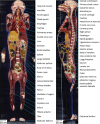
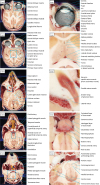
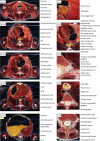
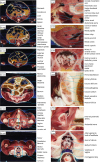





 PDF
PDF Citation
Citation Print
Print



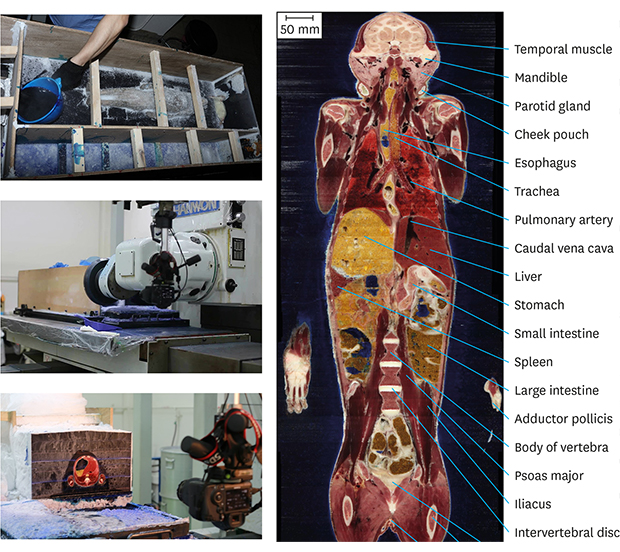


 XML Download
XML Download